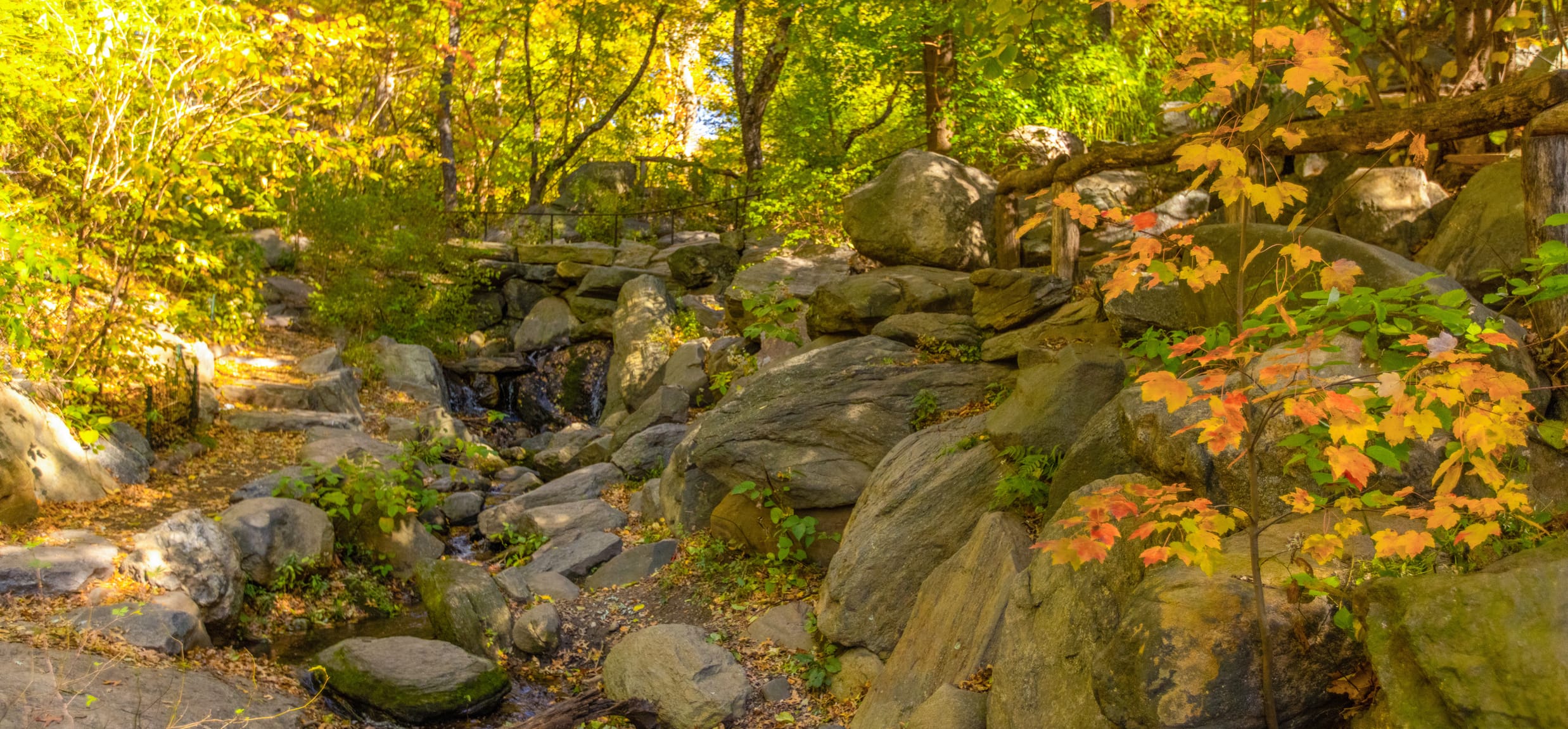Magazine
Sculpted Nature: Landscape Architecture in Central Park

A popular misconception about Central Park is that its 843 acres are the last remaining natural land in Manhattan. While it is a green sanctuary inside a dense, hectic metropolis, this urban park is entirely human-made. It may look like it's naturally occurring, but the flora, landforms, water, and other features of Central Park have not always existed.
Every acre of the Park was meticulously designed and built as part of a larger composition—one that its designers conceived as a "single work of art." Together, they created the Park through the practice that would come to be known as "landscape architecture."
The principles of landscape architecture are on full display in the artistry of Central Park. In fact, Frederick Law Olmsted and Calvert Vaux, the Park's designers, are credited with coining the term "landscape architecture" and founding the profession in this country.
Olmsted and Vaux's founding vision (called the Greensward plan) included three types of landscapes: pastoral (peaceful meadows and placid lakes), picturesque (the lush and playful woodlands), and formal (plazas and promenades). Here's a little about each of these types of landscape, so that you can appreciate them the next time you're in the Park.
Pastoral
What is it? A pastoral landscape is defined by its gentle, sprawling lawns, shaded walks, or broad expanses of placid water, evoking a feeling of peaceful spaciousness.
What is it for? These open spaces were purposely designed to provide a sense of openness and expansiveness that is hard to find in a bustling city. They are spaces for quiet reflection, reading, or admiring the surrounding scenery. The North Meadow, pictured below, is a great example of a pastoral landscape.

Picturesque
What is it? A picturesque landscape is complex, rough, and irregular, compelling Park visitors to navigate winding pathways and encounter eclectic materials (such as wood, rocks, and water).
What is it for? According to Olmsted, the picturesque landscapes are meant to "create a degree of obscurity not absolutely impenetrable, but sufficient to affect the imagination with a sense of mystery." In other words, these areas are meant to be explored, unfolding as you stroll through unpredictable trails.
The Ramble, pictured below, is a great example of a picturesque landscape.

Formal
What is it? Olmsted and Vaux envisioned the Mall and Bethesda Terrace as the single formal feature of the Park, a grand promenade and "open-air reception hall for the people."
What is it for? Formal landscapes were meant to be public gathering spaces, to draw visitors to the heart of the Park. Other formal structures, like Grand Army Plaza and the Conservatory Garden, were added in later decades, as the Park continued to transform.
Bethesda Terrace, pictured below, is a great example of a formal landscape.

Today, visitors can appreciate the living art and science of landscape architecture throughout the Park. You can witness the work of contemporary landscape architects in the continued restoration of these historic landscapes, which are overseen by the Central Park Conservancy's Planning, Design & Construction team. But most importantly, you can experience them first-hand, appreciating the intention behind every space in the Park while you relax, explore, and interact with nature.



